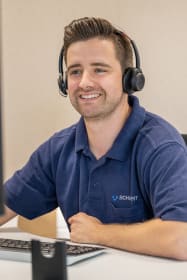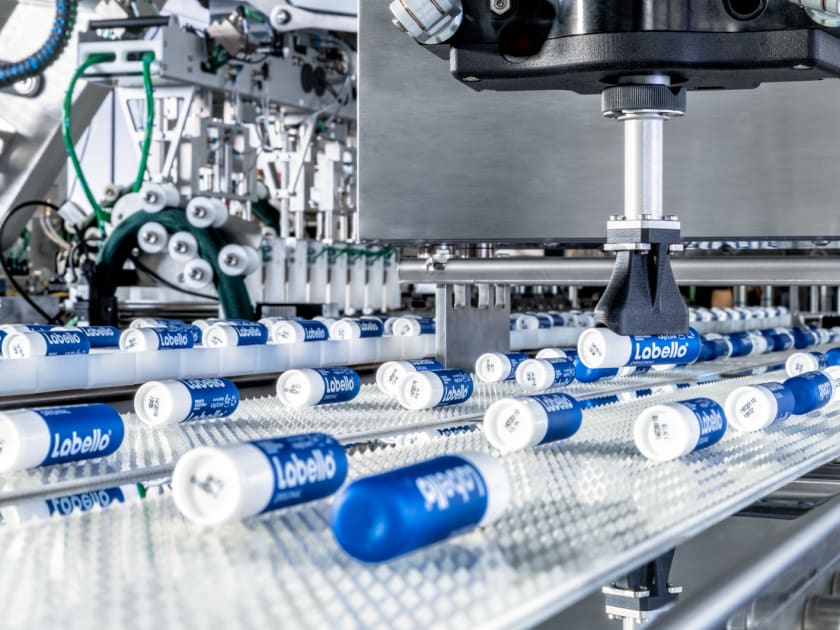The agile vision system with high line efficiency was built based on Schubert’s proven TLM system components. All individual parts of the packaging, such as bottles, caps, brushes and pumps are fed via a belt without format parts. Here once again, Schubert stands out with its exceptionally high quality management throughout the entire production process. Schubert’s new proprietary 3D camera system records the unsorted and partially superimposed objects in three dimensions. A pick & place robot picks up these components with high-level accuracy (“gripping into chaos”) and places them on the Transmodul. This takes the components to one of two versatile programmable filling stations, each with six filling stations. Thanks to the two filling stations, cleaning times can be bridged or even 2-phase products of different viscosity can be filled with absolute precision.
After filling, a check is made to ensure that all bottles have the desired weight. If this is not the case, the corresponding filling point can be readjusted fully automatically by the shift register. The containers are then closed, labelled and printed. The new labelling station, fully integrated into the packaging machine, applies either a front and back label, or a 360° label. For final packaging, the outer carton is erected and loaded with the products in just one step. Without a single external interface, the finished pallet with the packed products is ready for dispatching at the end of the efficient line.







